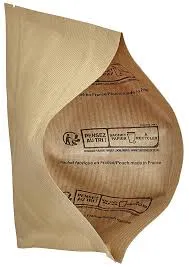- Afrikaans
- Albanian
- Amharic
- Arabic
- Armenian
- Azerbaijani
- Basque
- Belarusian
- Bengali
- Bosnian
- Bulgarian
- Catalan
- Cebuano
- chinese_simplified
- chinese_traditional
- Corsican
- Croatian
- Czech
- Danish
- Dutch
- English
- Esperanto
- Estonian
- Finnish
- French
- Frisian
- Galician
- Georgian
- German
- Greek
- Gujarati
- haitian_creole
- hausa
- hawaiian
- Hebrew
- Hindi
- Miao
- Hungarian
- Icelandic
- igbo
- Indonesian
- irish
- Italian
- Japanese
- Javanese
- Kannada
- kazakh
- Khmer
- Rwandese
- Korean
- Kurdish
- Kyrgyz
- Lao
- Latin
- Latvian
- Lithuanian
- Luxembourgish
- Macedonian
- Malgashi
- Malay
- Malayalam
- Maltese
- Maori
- Marathi
- Mongolian
- Myanmar
- Nepali
- Norwegian
- Norwegian
- Occitan
- Pashto
- Persian
- Polish
- Portuguese
- Punjabi
- Romanian
- Russian
- Samoan
- scottish-gaelic
- Serbian
- Sesotho
- Shona
- Sindhi
- Sinhala
- Slovak
- Slovenian
- Somali
- Spanish
- Sundanese
- Swahili
- Swedish
- Tagalog
- Tajik
- Tamil
- Tatar
- Telugu
- Thai
- Turkish
- Turkmen
- Ukrainian
- Urdu
- Uighur
- Uzbek
- Vietnamese
- Welsh
- Bantu
- Yiddish
- Yoruba
- Zulu
Exploring the Benefits and Applications of PLA Materials in Modern Industry
The Rise of PLA Material A Sustainable Alternative to Traditional Plastics
In recent years, the global push for sustainability has led to a significant rise in the use of polylactic acid (PLA) material. This bioplastic, derived from renewable resources like cornstarch or sugarcane, is garnering attention as a viable alternative to traditional petroleum-based plastics. As environmental concerns become increasingly pressing, PLA shines as a beacon of hope, offering solutions to some of the most challenging problems posed by plastic pollution.
What is PLA?
PLA is a biodegradable thermoplastic made by fermenting plant sugars into lactic acid, which is then polymerized to create long chains of PLA. This process not only provides a sustainable source of raw material but also ensures that the production of PLA has a lower carbon footprint compared to conventional plastics. Once used, PLA can degrade into natural components composted back into the environment, making it a preferred choice for eco-conscious consumers and manufacturers alike.
Advantages of PLA Material
One of the most significant advantages of PLA is its renewability. Unlike traditional plastics, which are derived from non-renewable fossil fuels, PLA is produced from agricultural byproducts. This shift toward renewable resources aligns with global sustainability goals and helps to reduce dependence on finite fossil fuel reserves. Furthermore, the cultivation of crops used in PLA production contributes to carbon dioxide absorption, promoting an overall reduction in greenhouse gas emissions.
Another remarkable feature of PLA is its versatility. It can be processed using conventional plastic manufacturing techniques, such as injection molding and 3D printing, making it accessible for various applications. This adaptability enables PLA to be used in diverse industries, including packaging, textiles, and even electronics. With the growing demand for sustainable packaging solutions, PLA has found its niche in producing biodegradable bags, food containers, and disposable utensils.
Moreover, PLA materials possess excellent clarity and gloss, making them appealing for consumer products. Their aesthetic qualities, combined with the promise of environmental friendliness, have made PLA popular among brands looking to enhance their sustainability image. Awareness of the detrimental impacts of single-use plastics has driven consumers toward alternatives like PLA, which can meet the same functional requirements without the associated environmental harm.
pla material

Challenges Facing PLA
Despite the numerous advantages, the adoption of PLA is not without challenges. One of the primary concerns is its composting requirements. While PLA is biodegradable, it requires specific industrial composting conditions to break down effectively. Home composting may not provide the necessary heat and conditions for PLA to decompose fully, which can lead to confusion among consumers regarding disposal methods.
Additionally, production scalability poses another hurdle. Although PLA production is growing, it still lags behind traditional plastics in terms of volume. Transitioning industries to widespread PLA usage necessitates significant investment in infrastructure and technology. The supply chain for PLA also relies heavily on agricultural commodities, making it susceptible to fluctuations in crop yields and prices.
The Future of PLA Material
Looking forward, the future of PLA material appears promising. Continuous advancements in manufacturing technologies and biopolymer research could enhance the efficiency of PLA production and widen its applications. As consumer demand for sustainable products rises, companies are increasingly prioritizing eco-friendly materials in their product lines.
Moreover, supportive governmental policies and incentives focused on sustainability and circular economy practices can drive further adoption of PLA. Research into improving the compostability of PLA and enhancing its durability will likely expand its usability in areas previously dominated by traditional plastics.
In conclusion, PLA material represents a significant step toward a more sustainable future. By addressing some of the critical issues posed by plastic pollution, PLA offers a compelling alternative that can significantly reduce environmental impact. As technology advances and consumer awareness continues to grow, PLA might very well become a staple in our efforts to create a circular economy. The potential benefits of PLA are numerous, and embracing this innovative material could lead us toward a greener, more sustainable world.













